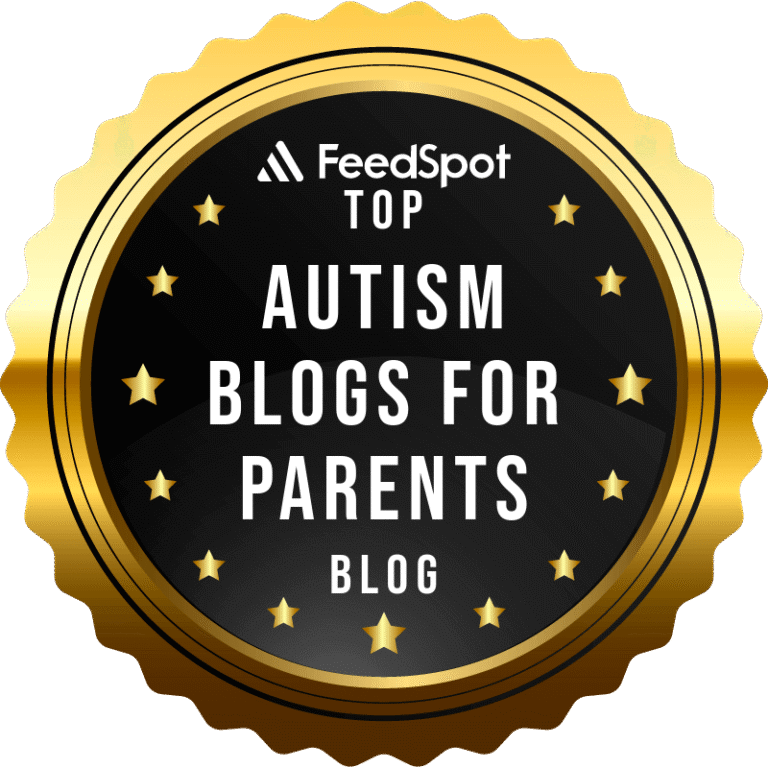
Latest posts
Autism: When Behavior Speaks, It’s A Language All Its Own
By Kristi | Published | 2 Comments
Autism and behaviors— the two words often go hand and hand. It can be challenging, no matter how many times you approach a similar behavior or witness a new one. It begs the question, “What is the behavior trying to tell you?”. Behaviors are a language all their own at times, and my personal experiences have often left me scrambling for the answer time and time again. However, when I reflect back, more often than not, the answer was right there in front of me in a language I could understand.
When Jonathan was newly diagnosed, the behaviors that took center stage were tantrums and escaping. Whenever we went out in public, I had a vice grip on his hand while at the same time, scouting the area for anything that might set him off. It often felt like tactical maneuvers making for less than enjoyable outings.
For example, when we lived in Omaha, one of Jonathan’s favorite places to eat was Runza. If you’re not familiar with the name, it’s a fast food restaurant, so it was quick, easy, and I could go through the drive-thru. One day, while out, we passed by one and when I did not stop, Jonathan threw a huge tantrum in the car. I had to pull over as he tried to escape from his carseat and he continued screaming the entire way home. A week or so later, we passed another Runza, but this outburst was worse than the first one.
His behavior set the tone for me. I began re-routing myself when Jonathan was with me to avoid passing a Runza. This went on for about a month until one day as I was driving, it dawned on me– I was letting his behavior control me. Obviously I knew what his behavior was telling me and I was pretty sure he was winning. So I regrouped and decided on a new strategy.
The following week, we went driving around and I purposely drove past a Runza every time. Yes, he threw a fit, and no, it wasn’t fun for me, but each time, two things began to happen. I could feel myself gaining back control and he began to realize his behavior wasn’t getting him what he wanted. I used short sentences like “no Runza today”, or “not when we act out”. I could see the wheels starting to turn and we were beginning to speak the same language.
One day as we drove past a Runza, Jonathan did what I was waiting for him to do: nothing. No tantrum, crying, squirming etc. I turned right in and promptly ordered his favorite meal. I praised him for his behavior and we went home, where he happily ate his kids’ meal.
However, I knew every time he responded appropriately, we would not be stopping, as he would have to learn like everyone else— sometimes you get what you want, and sometimes you don’t. So on the days when I knew we weren’t going, I would foreshadow Jonathan by reminding him, “no Runza today”. What I didn’t realize at first, was what a powerful reinforcer that moment became when he did get his meal while behaving appropriately. It set the foundation for me as well as for him. My behavior was communicating with him and we were understanding each other.
“I want what I want, when I want it” behavior is quite common in all children, and Jonathan was no exception. However, autism played a role since Jonathan could not verbalize, and behavior was his only language. His language through behavior would play a role time and time again and I was picking it up. Not all behavior was extreme, in fact, most were pretty straightforward and easy to understand— covering his ears if sound was bothering him or removing a piece of clothing that was uncomfortable. Behavior became more self explanatory as I began to decipher its meaning and recognize the lengthy list of contributors. From growth spurts to hormonal changes, sensory issues from numerous sources, frustrations due to lack of language and the typical basic needs, each played a role in the vernacular.
The most challenging behaviors have been self-injurious and physical aggression. This form of communication can be understood when the reason is obvious. As Jonathan became an adult, the reasons have become less obvious leaving me baffled by the meaning. My crusade continues as I search for the answers to understand behaviors that speak a language all their own.
And for now, I’m still trying to discern and interpret the language of behavior.
2 Responses
Leave a Reply






i remember one time you were in McDonalds. he was having a tantrum and you said you wanted a hat that read “he has autism!”
Omg yes I do remember saying I’m going to get a hat that says “He has autism does that answer your question?”